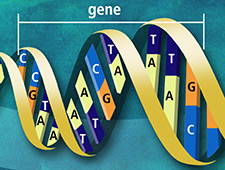- 01: Introduction
- 02: History
- 03: Propellants, Firearms, and Ammunition Development
- 04: Modern Firearms Manufacture
- 05: Small Arms Ammunition
- 06: Evidence Handling Procedures
- Introduction
- Objectives
- AFTE Knowledge and Ability Factors
- Types of Evidence
- Associative Evidence
- The Crime Scene
- Evidence Submission
- Laboratory Evidence Handling
- Case Tracking Within the Laboratory
- Firearm and Toolmark Examination Considerations
- Selected Bibliography
- 07: Equipment and Instrumentation
- 08: Examination of Firearms
- 09: Cartridge and Shotshell Examination
- 10: Characterization and Evaluation of Fired Projectiles
- 11: Bullet Comparison and Identification
- 12: Gunshot Residue and Distance Determination
- 13: Toolmark Identification
- 14: Communicating Results
- Resources


Specificity
Home > Evidence Handling Procedures > Associative Evidence > Value of Associative Evidence > Specificity

Unique DNA sequence. The side-by-side
arrangementof bases along the DNA strand
(e.g., ATTCCGGA).
The value of associative evidence in regard to specificity or identity can be illustrated with a comparison of blood versus glass evidence.
Blood can be identified using DNA analysis. The typical DNA testing procedure results in the identification of the chemical composition at each of thirteen different locations on a DNA molecule. Every DNA molecule in the body of an individual will have the same composition at these sites. A reported DNA profile is therefore a specific description of a person’s DNA.
In contrast, there are minute differences in the physical and trace chemical properties of a sheet of glass. Testing fragments from the glass sheet will reflect the variations in these properties; these variations will be greater in fragments originating in different locations across the same sheet of glass. The differences are small, but they do result in some uncertainty as to the absolute identity of the material tested and therefore the true value of the associative evidence.




